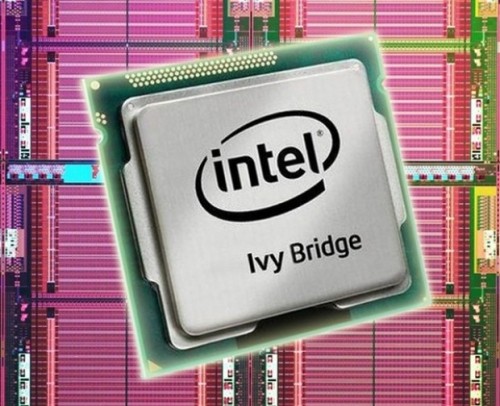 The new Intel Ivy Bridge CPU is just days away from us but enthusiasts and overclockers around the Internet have started a new rumor, which claims that the new CPU is warmer than expected and hence a worse overclocker that the current Sandy Bridge processors.
The new Intel Ivy Bridge CPU is just days away from us but enthusiasts and overclockers around the Internet have started a new rumor, which claims that the new CPU is warmer than expected and hence a worse overclocker that the current Sandy Bridge processors.
According to reports on the Internet, made by enthusiasts who have already obtained an Ivy Bridge CPU, the new product features a higher than expected TDP of 95 W. Earlier Intel promised TDP of 77 W for all 22 nm Ivy Bridge cores but the chip manufacturer may have been forced to revise its promises and expectations.
The problem apparently lies in the new Tri-Gate transistors and the new 22 nm technology that Intel uses for its Ivy Bridge processors. The transistors are extremely tightly packed and the die size is so small compared to earlier processors, that the heat cannot be removed fast enough with air and water cooling.

The trapped heat also decreases the overclocking headroom of Ivy Bridge with overclockers on the Internet saying that they can only achieve 4.6-4.7 GHz on air with temperatures reaching 90 degrees Celsius where the CPU throttles itself down in order to prevent damage to the cores. Compared to Core i7-2600K that in many cases can do 4.8 – 5.0 GHz stable with a good after-market cooler, Ivy Bridge looks to be 200 – 300 MHz worse than Sandy Bridge.
If all this is true then the upgrade to Ivy Bridge from a current Sandy Bridge computer may be irrelevant to most enthusiasts and overclockers. Intel suffered a similar setback in 2004 when the newly released 90 nm Pentium 4 Prescott core was found to be much hotter while offering lower clock speeds than the older 130 nm Pentium 4 Northwood core it had come to replace.
Still, Intel has time to remedy the situation if all facts here are correct and the company may as well roll out 77 W TDP Ivy Bridge chips when the time comes later this month.
Source: Nordichardware
